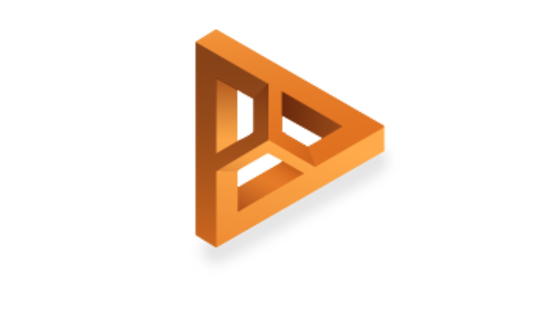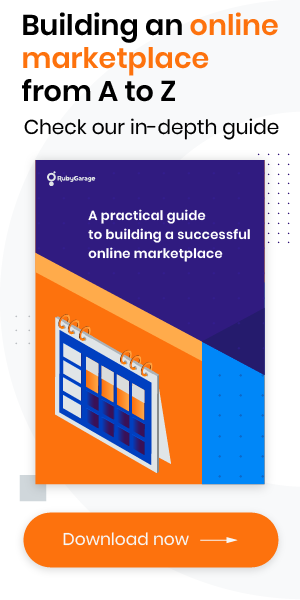-
Product Management
Software Testing
Technology Consulting
-
Multi-Vendor Marketplace
Online StoreCreate an online store with unique design and features at minimal cost using our MarketAge solutionCustom MarketplaceGet a unique, scalable, and cost-effective online marketplace with minimum time to marketTelemedicine SoftwareGet a cost-efficient, HIPAA-compliant telemedicine solution tailored to your facility's requirementsChat AppGet a customizable chat solution to connect users across multiple apps and platformsCustom Booking SystemImprove your business operations and expand to new markets with our appointment booking solutionVideo ConferencingAdjust our video conferencing solution for your business needsFor EnterpriseScale, automate, and improve business processes in your enterprise with our custom software solutionsFor StartupsTurn your startup ideas into viable, value-driven, and commercially successful software solutions -
-
- Case Studies
- Blog
Peer-to-Peer Marketplaces: Best Practices
We bet you’ve seen at least one article titled something like “Airbnb for cats” or “Uber for food” on tech blogs just like ours. Indeed, Airbnb and Uber set the fashion for future generations of X. Do you want your marketplace to gain the same power and influence as Airbnb and Uber? If so, you’ve started reading the right article.
Here’s a selection of best practices to help you create and drum up interest in your peer-to-peer marketplace. We’ll start with choosing the ideal niche for your marketplace.
#1. Choose your niche
Consider targeting a vertical market instead of a horizontal one. Vertical market vendors focus on delivering specialized products or services that meet the needs of a niche group of customers: either a specific industry or a specific demographic. In other words, instead of spreading themselves over a variety of products, like Bonanza does, vertical marketplaces focus on a specific set of products. For instance, Rover.com specializes in pet services, and UpCounsel offers legal services.
Since vertical marketplaces direct their attention to a single niche, they can engineer a better user experience by highlighting the special features of their product category. Specialization helps vertical vendors to differentiate their marketplaces and gain a competitive advantage.
The world of horizontal markets is full of established leaders. If you decide to aim for this market, you’ll face multiple strong competitors. On the other hand, a well-chosen vertical market can have less competition and may be easier to monopolize. You may have heard of Jet.com announcing big plans, yet it’s way behind one of the largest horizontal marketplaces – Amazon.
Note that vertical vendors should have deep industry knowledge to succeed in their niche. This helps them to be responsive to changes in regulatory issues and other shifts in their specific market.
Even though vertical marketplaces can grow quickly, they still have limited growth potential and require less traditional approaches to expand their audiences. In this vein, Airbnb used Craigslist ads as a form of growth hacking.
As opposed to marketing through traditional ad space, the company scoured Craigslist for people renting out rooms and then contacted each person individually asking them to list their apartment on Airbnb instead. Once Airbnb gathered enough hosts and was only lacking guests, the marketplace started hiring freelance photographers to take professionally styled photos of hosts’ apartments.
#2. Start working in a limited area
Along with focusing on one niche, we recommend starting your business in a specific geographic area and expanding gradually. Many now-famous marketplaces followed this strategy. Classpass, the fitness marketplace, began in New York and afterward occupied the whole East Coast.
Another example is TaskRabbit. Its predecessor, RunMyErrand, began in 2008 in Boston with only 100 “runners.” In 2010, its founder, Leah Busque, changed the name of the company from RunMyErrand to TaskRabbit and later moved with a team across the country and opened operations in the San Francisco Bay Area.
This kind of approach helps you test the worthiness of your business idea before going global, reduce expenses and possible risks, gain a critical mass of users, and get useful insights into how your target audience reacts to your product. This data can show you how you can improve your product in order to conquer more regions.
#3. Build a strong network effect
Some entrepreneurs confuse the network effect with a large user base. But the network effect is far more than just a great number of users. The network effect is the positive impact each new user has on other users in the marketplace. When a new user joins a marketplace, they increase the value of the product or service for everyone. This additional value can come in the form of cost reductions (for instance, the costs of user acquisition), higher liquidity (in the marketplace), and a stronger community.
To put it simply, the more customers you have, the more attractive your marketplace is for value providers – and vice versa. Let’s explore how the network effect works with Uber.
The more cars are available in Uber, the more passengers are likely to use this marketplace. Conversely, more passengers using Uber entices more drivers. However, the factor that causes the marketplace to scale isn’t the number of drivers or passengers but the level of participation of these two parties.
More involvement from drivers is valuable only when it gives higher ride availability resulting in shorter wait times for passengers. Likewise, more engagement from passengers adds to the platform’s overall value only if it amounts to more requests and reduces downtime for drivers.
The network effect can also backfire, however, becoming a so-called reverse network effect. Etsy has experienced this. Once Etsy became more popular, copycat sellers offering cheaper, lower-quality products flooded the marketplace so that some original independent creators were forced to abandon it.
#4. Build a positive reputation
Guaranteeing secure transactions and reliable value providers is the number one issue for marketplaces. People might be afraid of buying goods, renting apartments, taking taxi rides, or leaving their children with strangers. This is why it’s crucial to create a sense of trust in your marketplace.
How can I build trust between customers and providers in my marketplace? Trust between buyers and sellers develops through reputation systems. Reviews are the minimum reputational estimator you can offer your clients. Look at the Fiverr reputation system. Fiverr lets buyers rate sellers on a scale of 1 to 5, where 1 is the lowest grade, as well as leave feedback on their interactions with a particular buyer.

What’s more, once a seller delivers high-quality work and maintains strong ratings, they can earn new status levels: level one, level two, and top rated seller. Each of these levels has its own set of benefits.
If you think that a reputation system is only possible for centralized marketplaces, we have great news for you. Trust is Risk is a recently proposed Bitcoin-based reputation system for decentralized marketplaces, also known as blockchain-based marketplaces. In the Trust is Risk system, the trust that users give to others is expressed in monetary terms.
Imagine there are two users of the WinItAll decentralized marketplace ‒ Mike and Molly. Mike’s level of trust in Molly equals the maximum amount of money Mike can lose when buying from Molly.
The reputation system works through lines of credit. Let’s say that Mike wants to buy a mansion from Molly that costs 10 Bitcoins, for instance. He can evaluate his level of trust in Molly as 10 Bitcoins. Molly, in turn, has entrusted her coins to a third user, Rodger, prior to her dealing with Mike. Therefore Mike indirectly trusts Rodger and engages in economic transactions with him. Why? Because if Rodger wanted to steal money, he would have already done it with the coins given by Molly.

A good reputation can be the ultimate factor in whether a customer decides to support your marketplace over another. Users prefer marketplaces with great reputations even if there are similar businesses offering the same products or services at different prices. An enviable reputation can not only help your marketplace distinguish itself in highly competitive markets but also allow it to set higher prices.
#5. Provide added value
Many businesses offer added value in order to get and retain users and enhance their brand awareness. If you’re eager to employ this tactic, you should see your business from your customers’ perspective. Don’t try to offer them meaningless things. Consider, instead, what your target audience needs and how your product or service will benefit them. What problem can your product address? How will it help your customers solve their pains and overcome obstacles?
Still don’t know how to delight your users? Consider the Etsy example. This marketplace supports blogs, forums, ratings, a feedback system, live workshops, an online newspaper written by both Etsy staff and site members, and much more.
A strong community and content marketing, though, are not the only things you need to think about. An excellent customer experience (CX) also matters a lot. Customer satisfaction is one of the most effective ways to keep your users on board.
#6. Deliver a remarkable customer experience
The customer experience is all about what customers feel when using your product: are they delighted or disappointed? The CX shows the balance between your actions and your customers’ expectations. You know that you’re doing well when your CX exceeds your customers’ expectations. And you probably need to change tactics if you fail to meet expectations.
Forrester defines a great customer experience as a combination of three characteristics:
- Usefulness ‒ a good customer experience delivers value to your customers and addresses their pains
- Usability ‒ this value is easy to find and benefit from
- Enjoyability ‒ a good customer experience is emotionally engaging and encourages customers to stay loyal to your brand
When designing a customer experience strategy, you should tackle every issue starting from the first screen your customer sees to a fast and reliable shipping vendors.
The better your CX, the more successful your marketplace. Marketplaces that deliver an exceptional customer experience have a better chance of obtaining word-of-mouth referrals, positive online reviews, and high retention rates.
#7. Avoid users’ bypassing your marketplace
We all know the struggle when a customer tries to dodge fees and contact value providers directly. If you’re an owner of a food delivery marketplace, you’re likely to escape the bypassing problem. Why? Because the food industry is flourishing and new restaurants are popping up all the time (and people want to try them out).
But when it comes to repetitive transactions such as beauty appointments or gym classes, customers have more of an incentive to strike an agreement outside your marketplace. How can you fight against this?
One of the obvious ways is to make it harder for users to exchange personal information. Fiverr uses messaging crawlers to look through chats and send warnings to users who write certain keywords such as email or payment.
Airbnb applies almost the same system, removing contact details from private messages between users. Yet this approach is not ideal. Users can write their phone number with letters or just type something like “find me in the book” instead of “on Facebook.” But don’t think that we’re trying to teach users how to bypass the Airbnb payment system.
You, of course, can restrict any private messages before conducting transactions in your marketplace and make users ask questions publicly, as in the case of BlaBlaCar. However, this may sound too radical and may create unnecessary friction for your customers, nudging them to leave your marketplace.
Provide unique value
We recommend that you shift the focus from preventing leakage to providing users with unique value to ensure that more transactions will be carried out within your marketplace.
What might this unique value be? Let’s discuss some common examples.
Safety
Safety holds second place in Maslow’s hierarchy, being the second-most fundamental need. Everyone wants to be safe no matter if they’re running a business or making a purchase. Your task is to provide a secure environment.
Many vendors are coming up with new ways to guarantee safety in their marketplaces. Care.com runs extensive background checks and full social media reviews. Trusted goes even further to give parents a solid reason to stay. The company offers live in-home videos so parents can check what’s going on with their child at any time and even monitor their babysitter’s location.

You can protect your customers from fraud by offering escrow services, when your marketplace takes payment and notifies the provider but doesn’t actually pay out the money until a service is completed. Some marketplaces, such as Pitchup, even use this sum of money as a marketplace fee.
Customers are not the only ones who need support. You need to please providers too. Uber lets drivers share their location, trip status, and related information with friends and family. Moreover, the company has an extensive insurance system.

Airbnb also provides insurance for hosts that covers property damage and bodily injury up to $1 million.
Besides, you can attract more users by offering lower fees.
Lower fees
If you want users to stay loyal to your marketplace, you may arrange a discount system and reduce fees for repeat and high-value transactions. At Upwork, fees for suppliers vary based on their lifetime billings with a client.
The last way to capture users in your marketplace is to automate routine tasks connected to providing and consuming services.
Automation tools
You can make it easier for providers to work with customers by creating workflow management tools. There are many things you can automate for your users. If you deal with babysitters or hosts, you can manage their availability with a scheduling system. If your target audience is sellers, you can help them handle inventory and delivery issues.
You may likewise help users to track project status. Check out the Upwork Work Diary, for example. This diary shows the hours a freelancer has worked by capturing snapshots of their computer screen. It makes six screenshots per billable hour.

This helps to reduce hassles related to invoices and payments for hourly contracts.
Want to be on top?
The modern marketplace sector is overcrowded with strong competitors and influential leaders. If you want to stand up to the competition and get an edge over other market players, you should track the market and benefit from current trends.
And of course, you can always contact our team if you need a reliable technical partner to create a successful marketplace.










